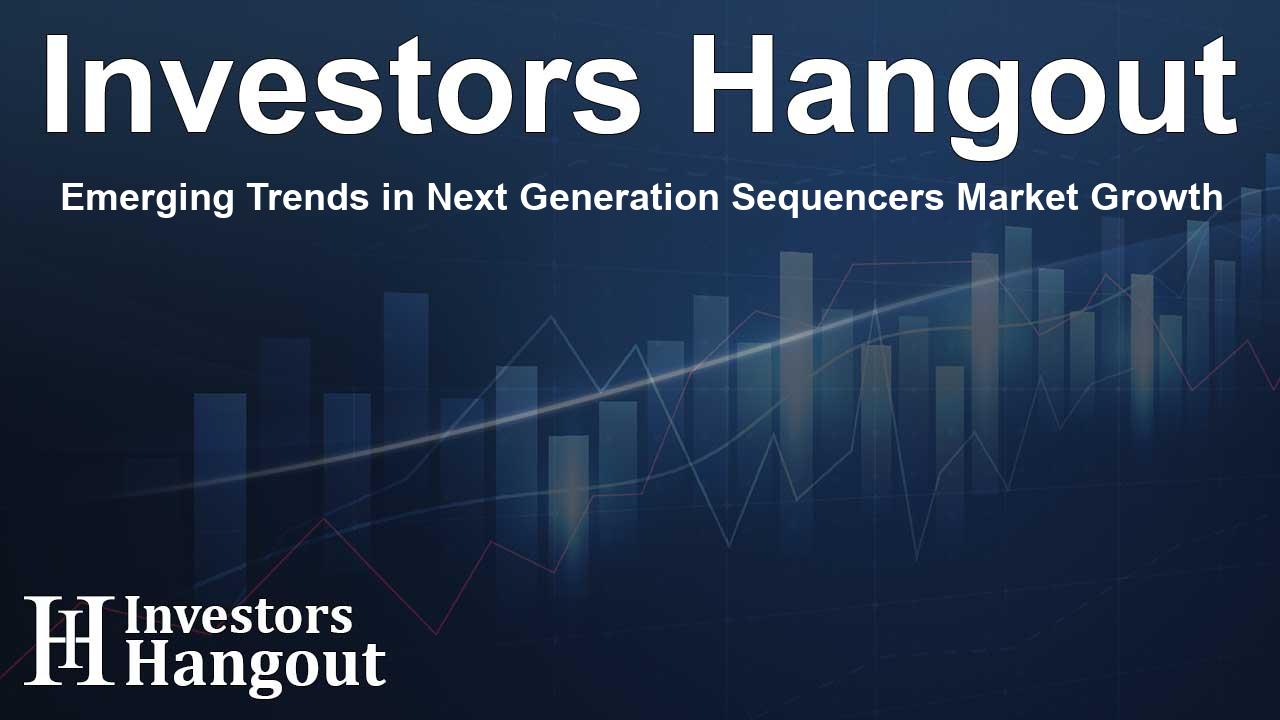Emerging Trends in Next Generation Sequencers Market Growth

Next Generation Sequencers Market Overview
The next generation sequencers (NGS) market is poised for significant growth, with a valuation of approximately US$ 1.2 billion as of recent reports. The market is projected to expand at a compound annual growth rate (CAGR) of 8.3%, potentially surpassing US$ 2.4 billion by 2031. This surge is primarily driven by increasing consumer interest in genetic testing and advancements in NGS technology.
Role of Government and Investments
Government backing has been pivotal in propelling the NGS market, through grants and funding aimed at genomics research. Enhanced genomic data availability is primarily the result of public investments in large-scale genomics projects. These investments have catalyzed innovation, improving accuracy and reducing sequencing costs, which has been crucial for wider adoption.
Technological Advancements
Innovations like single-cell sequencing have allowed researchers to delve deeper into cellular heterogeneity and disease mechanisms. Such technological advancements position NGS as an invaluable tool in modern genetics.
Key Market Findings
- The demand for targeted sequencing and resequencing technologies has surged, propelling the NGS market's growth.
- Benchtop sequencers dominated the market share in 2022 due to their accessibility and efficiency.
- Regions like Asia-Pacific are emerging as vital sources of genomic data, greatly influencing NGS development.
- North America continues to lead the market, spearheading innovations within pharmaceutical companies.
- Consumer genomics is emerging as a substantial driver for the NGS sector in the near future.
Growth Drivers of NGS Technology
- Advancements in NGS technology, including faster sequencing times and improved accuracy, have made genomic research increasingly efficient. The consistent reduction in sequencing costs has also accelerated the adoption of NGS among research institutions.
- Applications across various domains, such as personalized medicine and clinical diagnostics, demonstrate NGS's versatility, further solidifying its significance within the healthcare landscape.
- The escalating need for sophisticated bioinformatics tools is paramount as NGS data volumes grow. Efficient data interpretation is driving advancements in bioinformatics infrastructure, essential for translating genomic data into actionable insights.
Regional Insights
- North America is anticipated to maintain its dominance in the NGS market, with numerous research and clinical applications driving its growth. Continuous funding from universities and research institutions is facilitating genomic research.
- Firms within the biotechnology and pharmaceutical sectors are actively utilizing genomics to pave the way for innovative drug development and targeted therapies.
- There is a burgeoning trend in leveraging NGS for clinical diagnostics, especially in the diagnosis of cancers and rare diseases.
- Precision medicine initiatives in North America utilize genomic data extensively, aided by regulatory support that fosters NGS adoption.
Market Players and Developments
Key players in the NGS market, including companies such as Illumina Inc., Thermo Fisher Scientific Inc., and Pacific Biosciences, are continuously innovating and expanding their influence through strategic collaborations and product launches.
Recent Collaborations
Recent collaborations, like those between Revvity Inc. and Element Biosciences, signify an industry shift towards enhancing the efficiency of genomic analysis through advanced sequencing platforms.
Key Segmentation Overview
The NGS market is segmented by product, technology, application, end user, and region:
- By Product: Includes Benchtop Sequencers and Floor Standing Sequencers.
- By Technology: Encompasses Whole Genome Sequencing (WGS), Whole Exome Sequencing, Targeted Sequencing, and Resequencing.
- By Application: Covers areas like Oncology, Infectious Diseases, Reproductive Health, and Consumer Genomics.
- By End User: Encompasses Academic Research, Clinical Research, Hospitals & Clinics, and Pharma & Biotech Entities.
- By Region: North America, Europe, Asia Pacific, Latin America, and the Middle East & Africa.
Frequently Asked Questions
What is the projected growth rate for the NGS market?
The NGS market is projected to grow at a CAGR of 8.3% from 2023 to 2031.
What factors are driving the growth of NGS technology?
Key factors include advancements in technology, reduced costs, and the rise of personalized medicine.
Who are the major players in the NGS market?
Major players include Illumina Inc., Thermo Fisher Scientific Inc., and Pacific Biosciences.
Where is the NGS market growing the fastest?
Regions like North America and Asia-Pacific are experiencing the fastest growth due to increased investment in genomic data research.
How is NGS impacting clinical diagnostics?
NGS is significantly improving the accuracy of diagnostics for diseases like cancer and is being widely adopted in clinical settings.
About Investors Hangout
Investors Hangout is a leading online stock forum for financial discussion and learning, offering a wide range of free tools and resources. It draws in traders of all levels, who exchange market knowledge, investigate trading tactics, and keep an eye on industry developments in real time. Featuring financial articles, stock message boards, quotes, charts, company profiles, and live news updates. Through cooperative learning and a wealth of informational resources, it helps users from novices creating their first portfolios to experts honing their techniques. Join Investors Hangout today: https://investorshangout.com/
Disclaimer: The content of this article is solely for general informational purposes only; it does not represent legal, financial, or investment advice. Investors Hangout does not offer financial advice; the author is not a licensed financial advisor. Consult a qualified advisor before making any financial or investment decisions based on this article. The author's interpretation of publicly available data shapes the opinions presented here; as a result, they should not be taken as advice to purchase, sell, or hold any securities mentioned or any other investments. The author does not guarantee the accuracy, completeness, or timeliness of any material, providing it "as is." Information and market conditions may change; past performance is not indicative of future outcomes. If any of the material offered here is inaccurate, please contact us for corrections.